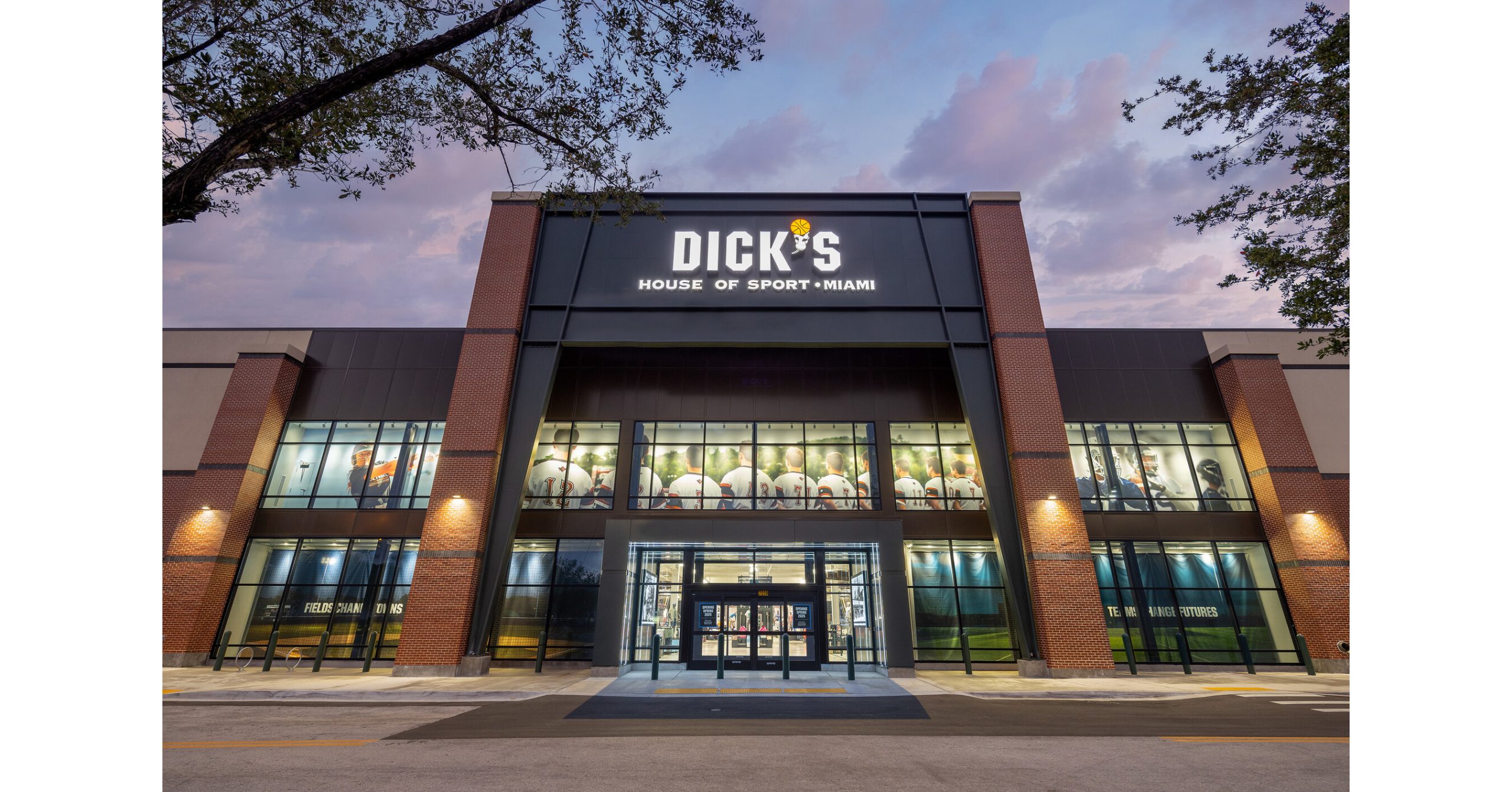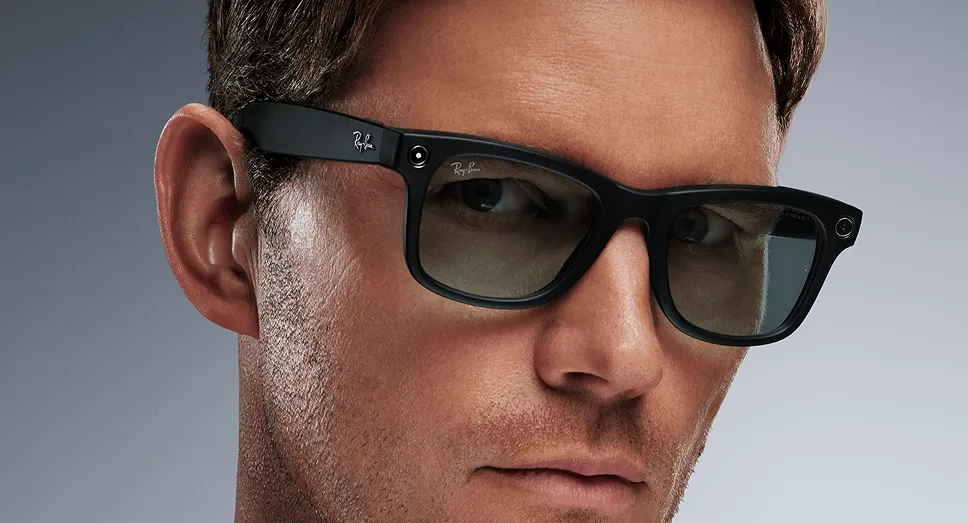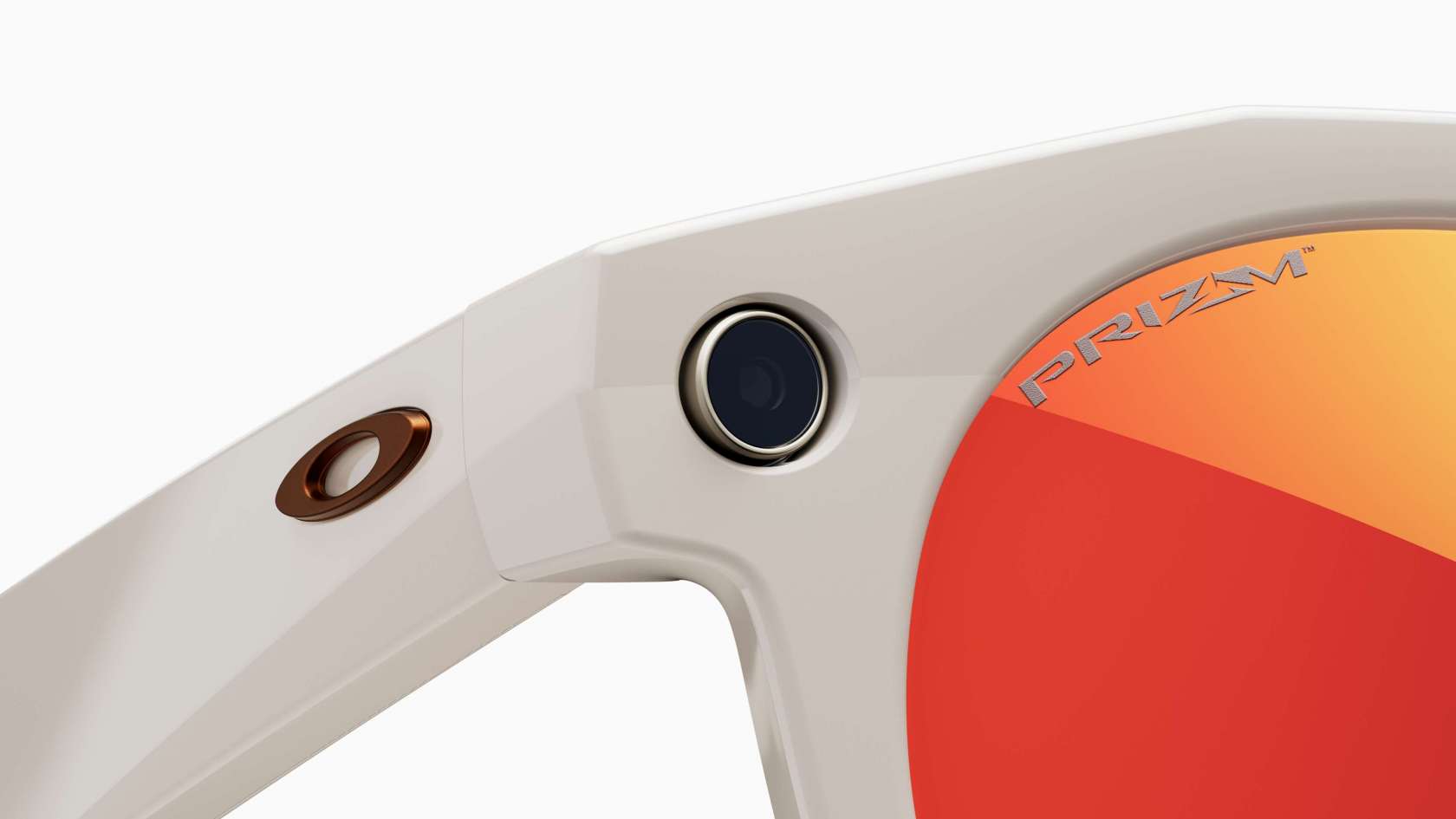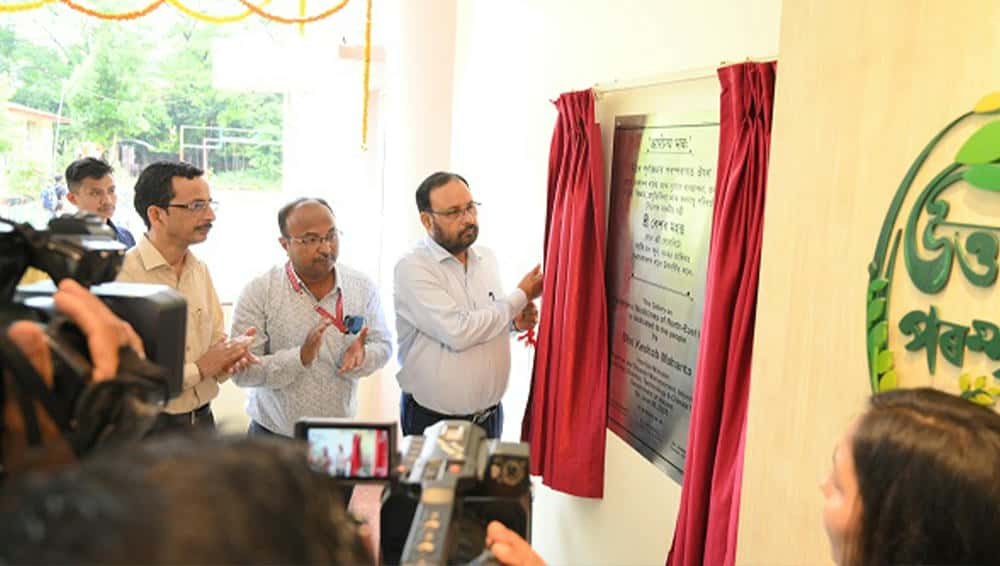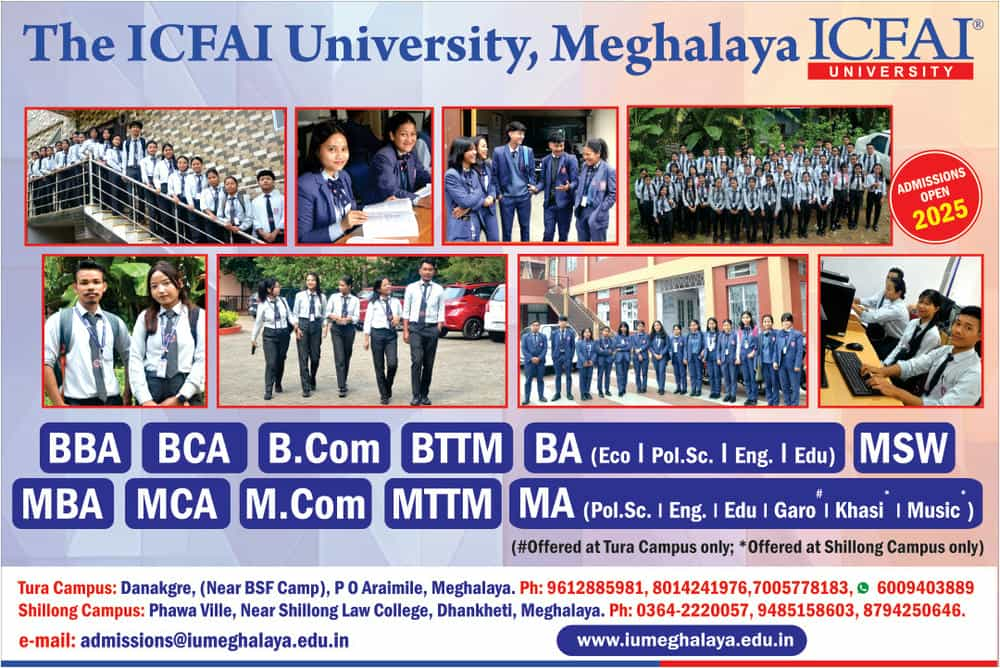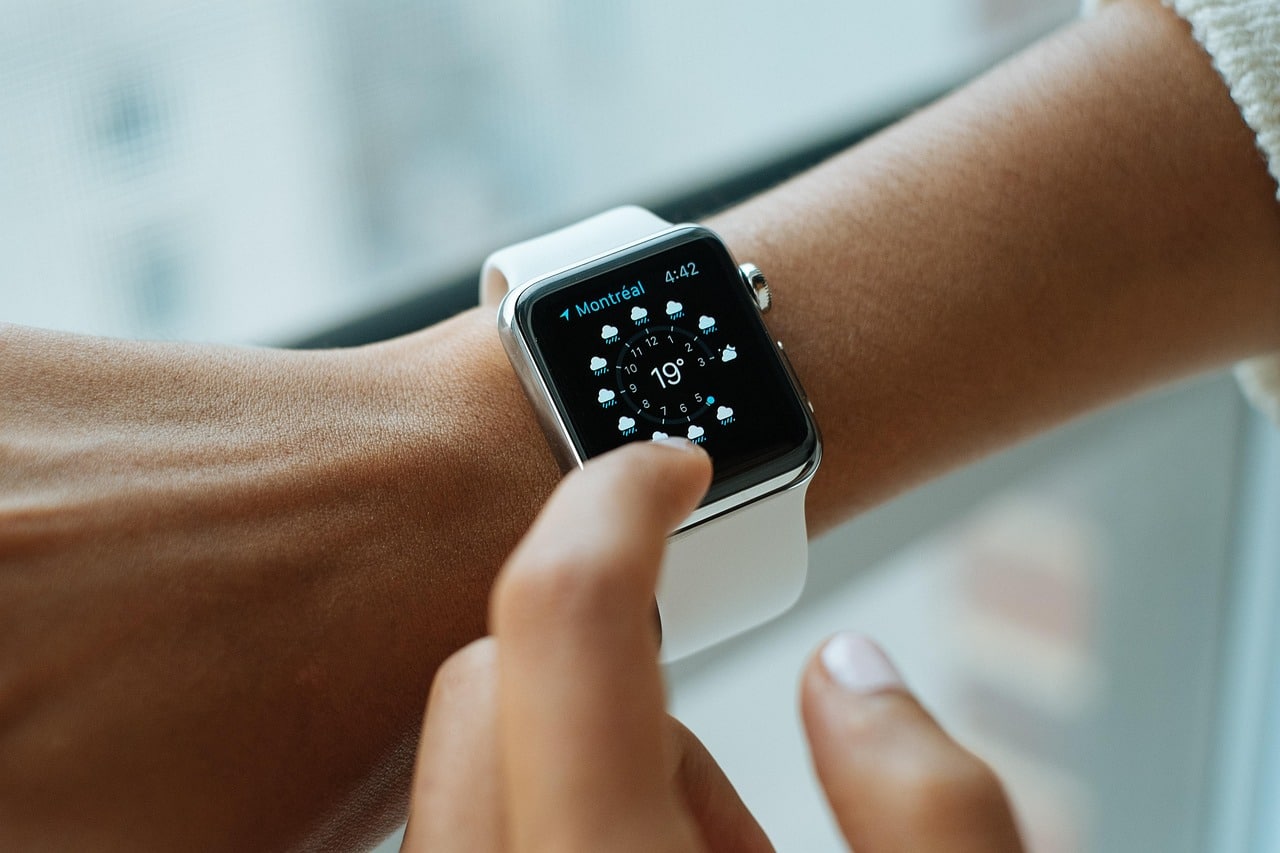|
First Quarter Operating Results
(dollars in millions, except per share data)
|
13 Weeks Ended
|
Change (7)
|
|
May 3, 2025
|
May 4, 2024
|
|
Net sales
|
$
|
3,175
|
$
|
3,018
|
$
|
156
|
5.2 %
|
|
Comparable sales (1)
|
|
4.5 %
|
|
5.3 %
|
|
|
|
Income before income taxes (% of net sales) (2)
|
|
11.0 %
|
|
11.3 %
|
|
(39) bps
|
|
Non-GAAP income before income taxes (% of net sales) (2) (3)
|
|
11.4 %
|
|
11.3 %
|
|
5 bps
|
|
Effective tax rate
|
|
24.0 %
|
|
19.6 %
|
|
441 bps
|
|
Net income
|
$
|
264
|
$
|
275
|
$
|
(11)
|
(4) %
|
|
Non-GAAP net income (3)
|
$
|
275
|
$
|
275
|
$
|
(1)
|
— %
|
|
Earnings per diluted share
|
$
|
3.24
|
$
|
3.30
|
$
|
(0.06)
|
(2) %
|
|
Non-GAAP earnings per diluted share (3)
|
$
|
3.37
|
$
|
3.30
|
$
|
0.07
|
2 %
|
|
|
|
Balance Sheet
(in millions)
|
As of
May 3, 2025
|
As of
May 4, 2024
|
$
Change (7)
|
%
Change (7)
|
|
Cash and cash equivalents
|
$
|
1,036
|
$
|
1,649
|
$
|
(613)
|
(37) %
|
|
Inventories, net
|
$
|
3,569
|
$
|
3,201
|
$
|
368
|
12 %
|
|
Total debt (4)
|
$
|
1,484
|
$
|
1,483
|
$
|
1
|
— %
|
|
|
|
Capital Allocation
(in millions)
|
13 Weeks Ended
|
$
Change (7)
|
%
Change (7)
|
|
May 3, 2025
|
May 4, 2024
|
|
Share repurchases (5)
|
$
|
299
|
$
|
114
|
$
|
185
|
163 %
|
|
Dividends paid (6)
|
$
|
100
|
$
|
94
|
$
|
6
|
6 %
|
|
Gross capital expenditures
|
$
|
265
|
$
|
158
|
$
|
107
|
68 %
|
|
Net capital expenditures (3)
|
$
|
242
|
$
|
126
|
$
|
116
|
92 %
|
Notes
|
(1)
|
Beginning in fiscal 2025, we revised our method for calculating comparable sales to include Warehouse Sale stores beginning in the stores’ 14th full month of operations, similar to our other store locations. Prior year information has been revised to reflect this change for comparability purposes. See additional details as furnished in Exhibit 99.2 of the Company’s Current Report on Form 8-K, filed with the SEC on March 11, 2025.
|
|
(2)
|
Also referred to by management as earnings before income taxes (“EBT”).
|
|
(3)
|
For additional information, see GAAP to non-GAAP reconciliations included in tables later in the release under the heading “GAAP to Non-GAAP Reconciliations.” In the fiscal 2024 period, there were no non-GAAP adjustments to reported EBT margin, net income or earnings per diluted share.
|
|
(4)
|
The Company had no outstanding borrowings under its revolving credit facility in 2025 and 2024.
|
|
(5)
|
During the 13 weeks ended May 3, 2025, the Company repurchased 1.4 million shares of its common stock under its previously announced share repurchase program at an average price of $218.65 per share, for a total cost of $298.7 million. The Company has $212.9 million remaining under this authorization as of May 3, 2025. The Company also paid $5 million during fiscal 2025 for shares repurchased during fiscal 2024.
|
|
(6)
|
The Company declared and paid quarterly dividends of $1.2125 per share in fiscal 2025 and $1.10 per share in fiscal 2024.
|
|
(7)
|
Column may not recalculate due to rounding.
|
Quarterly Dividend
On May 27, 2025, the Company’s Board of Directors authorized and declared a quarterly dividend in the amount of $1.2125 per share on the Company’s common stock and Class B common stock. The dividend is payable in cash on June 27, 2025 to stockholders of record at the close of business on June 13, 2025.
Agreement to Acquire Foot Locker
On May 15, 2025, the Company announced that it entered into a definitive merger agreement to acquire Foot Locker, Inc., a leading footwear and apparel retailer. Under the terms of the merger agreement, Foot Locker shareholders will elect to receive either (i) $24.00 in cash or (ii) 0.1168 shares of DICK’S Sporting Goods common stock for each share of Foot Locker common stock, for a total equity value of approximately $2.4 billion and an enterprise value of approximately $2.5 billion. The completion of the acquisition is subject to Foot Locker shareholder approval and other customary closing conditions, including regulatory approvals, and is expected to close in the second half of 2025. The Company intends to finance the acquisition through a combination of cash-on-hand, revolving borrowings and other new debt, to the degree Foot Locker shareholders do not elect to receive their consideration entirely in shares of the Company’s common stock.
Full Year 2025 Outlook (1)
The Company’s Full Year Outlook for 2025 presented below does not include acquisition-related costs, investment losses or results from the recently announced plan to acquire Foot Locker:
|
Metric
|
2025 Outlook
|
|
Earnings per diluted share
|
● $13.80 to 14.40
○ Based on approximately 81 million diluted shares outstanding
○ Based on an effective tax rate of approximately 24%
○ Includes the expected impact from all tariffs currently in effect
|
|
Net sales
|
● $13.6 billion to 13.9 billion
|
|
Comparable sales
|
● Positive 1.0% to positive 3.0%
|
|
Capital expenditures
|
● Approximately $1.2 billion on a gross basis
● Approximately $1.0 billion on a net basis
|
|
|
(1)
|
Please see the section of this document titled “Non-GAAP Financial Measures” for more information.
|
Store Count and Square Footage
The following table summarizes store activity for fiscal 2025:
|
Beginning
Stores
|
New
Stores
|
Closed
Stores
|
Relocated /
Converted (5)
|
Ending
Stores
|
(in millions)
Square Footage (6) (7)
|
|
Beginning
|
Ending
|
|
DICK’S Sporting Goods (1)
|
|
DICK’S (2)
|
677
|
—
|
(2)
|
(5)
|
670
|
36.3
|
35.9
|
|
DICK’S Field House (2)
|
27
|
1
|
—
|
3
|
31
|
1.6
|
1.8
|
|
DICK’S House of Sport
|
19
|
—
|
—
|
2
|
21
|
2.2
|
2.5
|
|
Total DICK’S Sporting Goods
|
723
|
1
|
(2)
|
—
|
722
|
40.1
|
40.1
|
|
|
Other Specialty Concepts (1)
|
|
Golf Galaxy (3)
|
109
|
1
|
—
|
—
|
110
|
2.4
|
2.4
|
|
Going Going Gone! (4)
|
50
|
2
|
(2)
|
—
|
50
|
2.2
|
2.3
|
|
Other
|
3
|
—
|
—
|
—
|
3
|
0.1
|
0.1
|
|
Total Other Specialty Concepts
|
162
|
3
|
(2)
|
—
|
163
|
4.8
|
4.8
|
|
Total (4)
|
885
|
4
|
(4)
|
—
|
885
|
44.8
|
45.0
|
|
|
(1)
|
In some markets, we operate DICK’S Sporting Goods stores adjacent to our specialty concept stores on the same property with a pass-through for our athletes. We refer to this format as a “combo store” and include combo store openings within both the DICK’S Sporting Goods and specialty concept store reconciliations, as applicable. As of May 3, 2025, the Company operated 14 combo stores.
|
|
(2)
|
Beginning store count and square footage were updated to reflect one DICK’S Field House location that opened in fiscal 2024, which was previously reflected as a DICK’S store.
|
|
(3)
|
As of May 3, 2025, includes 27 Golf Galaxy Performance Centers, with three new openings during fiscal 2025, two of which were conversions of prior Golf Galaxy store locations.
|
|
(4)
|
Beginning store count and square footage were updated to reflect Warehouse Sale locations as described in the Company’s Current Report on Form 8-K, filed with the SEC on March 11, 2025. As of February 2, 2025, beginning amounts now include 29 Warehouse Sale locations and 1.3 million of related square footage.
|
|
(5)
|
Reflects stores converted between concept or prototype through store relocations or remodels as part of the Company’s strategy to reposition its store portfolio. Including stores that converted between concepts, the Company relocated three stores during the current year period.
|
|
(6)
|
Includes square footage as of May 3, 2025 related to five Public Lands store closures as we plan to convert three into DICK’S House of Sport and two into DICK’S Field House stores during fiscal 2025.
|
|
(7)
|
Columns may not recalculate due to rounding.
|
Non-GAAP Financial Measures
In addition to reporting the Company’s financial results for the first quarter in accordance with generally accepted accounting principles (“GAAP”), the Company reports certain financial results for that quarter that differ from what is reported under GAAP. These non-GAAP financial measures include non-GAAP gross margin, non-GAAP operating margin (also referred to as non-GAAP EBIT margin), non-GAAP EBT margin, non-GAAP net income, non-GAAP earnings per diluted share and net capital expenditures, which management believes provides investors with useful supplemental information to evaluate the Company’s ongoing operations and to compare with past and future periods. Furthermore, management believes that adjustments related to its deferred compensation plans enables investors to better understand its selling, general and administrative expense trends by excluding non-cash changes in our deferred compensation plan investment fair values from market fluctuations that are offset within other income. Management also uses these non-GAAP measures internally for forecasting, budgeting, and measuring its operating performance. These measures should be viewed as supplementing, and not as an alternative or substitute for, the Company’s financial results prepared in accordance with GAAP. The methods used by the Company to calculate its non-GAAP financial measures may differ significantly from methods used by other companies to compute similar measures. As a result, any non-GAAP financial measures presented herein may not be comparable to similar measures provided by other companies. A reconciliation of the Company’s non-GAAP measures to the most directly comparable GAAP financial measures are provided below and on the Company’s website at investors.DICKS.com.
Information reconciling certain forward-looking GAAP measures to non-GAAP measures related to full-year 2025 outlook and guidance, including earnings per diluted share, net sales, comparable sales and capital expenditures, in each case presented herein on a non-GAAP basis due to the exclusion of acquisition-related costs, investment losses and results from the recently announced plan to acquire Foot Locker, is not available without unreasonable effort due to high variability, complexity and uncertainty involved in forecasting and quantifying certain amounts with respect to and resulting from the planned acquisition that are necessary for such reconciliations. For those reasons, we are unable to address the probable significance of the unavailable information, which could have a potentially unpredictable, and potentially significant, impact on our future GAAP financial results.
Forward-Looking Statements Involving Known and Unknown Risks and Uncertainties
This release contains forward-looking statements made pursuant to the safe harbor provisions of the Private Securities Litigation Reform Act of 1995. Forward-looking statements can be identified as those that may predict, forecast, indicate or imply future results or performance and by forward-looking words such as “believe”, “anticipate”, “expect”, “estimate”, “predict”, “intend”, “plan”, “project”, “goal”, “will”, “will be”, “will continue”, “will result”, “could”, “may”, “might” or any variations of such words or other words with similar meanings. Any statements about DICK’S Sporting Goods, Inc.’s (“DICK’S Sporting Goods”), Foot Locker, Inc.’s (“Foot Locker”) or the combined company’s plans, objectives, expectations, strategies, beliefs, or future performance or events constitute forward-looking statements. These statements are subject to known and unknown risks, uncertainties, assumptions, estimates, and other important factors that change over time, many of which may be beyond DICK’S Sporting Goods’, Foot Locker’s and the combined company’s control. DICK’S Sporting Goods’, Foot Locker’s and the combined company’s future performance and actual results may differ materially from those expressed or implied in such forward-looking statements. Forward-looking statements should not be relied upon as a prediction of actual results. Forward-looking statements include statements regarding, among other things, the Company’s future performance and growth opportunities, including 2025 guidance, continued comp growth, strategic investments and square footage expansion, and improved gross margin; the benefits of the combination of DICK’S Sporting Goods and Foot Locker (the “Transaction”), future financial and operating results and the combined company’s plans, objectives, expectations, intentions, growth strategies and culture and other statements that are not historical facts.
Factors that could cause actual results to differ materially from those expressed or implied in any forward-looking statements include, but are not limited to, current macroeconomic conditions, including prolonged inflationary pressures, potential changes to international trade relations, geopolitical conflicts and adverse changes in consumer disposable income; supply chain constraints, delays and disruptions; fluctuations in product costs and availability due to tariffs, currency exchange rate fluctuations, fuel price uncertainty and labor shortages; changes in consumer demand for products in certain categories and consumer lifestyle changes; intense competition in the sporting goods industry; the overall success of DICK’S Sporting Goods’, Foot Locker’s and the combined company’s strategic plans and initiatives; DICK’S Sporting Goods’, Foot Locker’s and the combined company’s vertical brand strategy and plans; DICK’S Sporting Goods’, Foot Locker’s and the combined company’s ability to optimize their respective distribution and fulfillment networks to efficiently deliver merchandise to their stores and the possibility of disruptions; DICK’S Sporting Goods’, Foot Locker’s and the combined company’s dependence on suppliers, distributors, and manufacturers to provide sufficient quantities of quality products in a timely fashion; the potential impacts of unauthorized use or disclosure of sensitive or confidential customer, employee, vendor or other information; the risk of problems with DICK’S Sporting Goods’, Foot Locker’s and the combined company’s information systems, including e-commerce platforms, and any associated disruptions to operations; DICK’S Sporting Goods’, Foot Locker’s and the combined company’s ability to attract and retain customers, executive officers and employees; our investments in GameChanger, our sports technology platform, DICK’S Media Network, and other technology to enhance our store fulfillment, in-store pickup and other foundational capabilities; potential reputational harm; our athlete experiences and associated costs, innovation, liability and competition associated with our specialty stores and vertical brands; increasing labor costs; the effects of the performance of professional sports teams within DICK’S Sporting Goods’, Foot Locker’s and the combined company’s core regions of operations; DICK’S Sporting Goods’, Foot Locker’s and the combined company’s ability to control expenses and manage inventory shrink; the seasonality of certain categories of DICK’S Sporting Goods’, Foot Locker’s and the combined company’s operations and weather-related risks; changes in applicable tax laws, regulations, treaties, interpretations and other guidance; product safety and labeling concerns; the projected range of capital expenditures of DICK’S Sporting Goods, Foot Locker and the combined company, including costs associated with new store development, relocations and remodels and investments in technology; plans to return capital to stockholders through dividends and share repurchases, if any; DICK’S Sporting Goods’, Foot Locker’s and the combined company’s ability to meet market expectations; the influence of DICK’S Sporting Goods’ Class B common stockholders and associated possible scrutiny and public pressure; compliance and litigation risks, including changing rules, regulations and expectations related to environmental, social and governance matters and various types of litigation and other claims and sufficient insurance with respect thereto; DICK’S Sporting Goods’, Foot Locker’s and the combined company’s ability to protect their respective intellectual property rights or respond to claims of infringement by third parties; the availability of adequate capital; obligations and other provisions related to DICK’S Sporting Goods’, Foot Locker’s and the combined company’s indebtedness; DICK’S Sporting Goods’, Foot Locker’s and the combined company’s future results of operations and financial condition; the occurrence of any event, change or other circumstance that could give rise to the right of one or both of the parties to terminate the Transaction; the outcome of any legal proceedings that may be instituted against DICK’S Sporting Goods or Foot Locker, including with respect to the Transaction; the possibility that the Transaction does not close when expected or at all because required regulatory or shareholder approvals or other conditions to closing are not received or satisfied on a timely basis or at all (and the risk that such approvals may result in the imposition of conditions that could adversely affect the combined company or the expected benefits of the Transaction); the risk that the benefits from the Transaction, including anticipated cost synergies, may not be fully realized or may take longer to realize than expected; the ability to promptly and effectively integrate the businesses of DICK’S Sporting Goods and Foot Locker following the closing of the Transaction; the dilution caused by the issuance of shares of DICK’S Sporting Goods common stock in the Transaction; the possibility that a Transaction may be more expensive to complete than anticipated, including as a result of unexpected factors or events; the terms of the debt financing incurred in connection with the Transaction; reputational risk and potential adverse reactions of DICK’S Sporting Goods’ or Foot Locker’s customers, employees or other business partners; and the diversion of DICK’S Sporting Goods’ and Foot Locker’s management’s attention and time from ongoing business operations and opportunities due to the Transaction. These factors are not necessarily all of the factors that could cause DICK’S Sporting Goods’, Foot Locker’s or the combined company’s actual results, performance or achievements to differ materially from those expressed in or implied by any of the forward-looking statements. Other factors, including unknown or unpredictable factors, also could harm DICK’S Sporting Goods’, Foot Locker’s or the combined company’s results.
For additional information on these and other factors that could affect the Company’s actual results, see the risk factors set forth in the Company’s filings with the Securities and Exchange Commission (“SEC”), including the most recent Annual Report on Form 10-K, filed with the SEC on March 27, 2025. We operate in a highly competitive and rapidly changing environment; therefore, new risk factors can arise, and it is not possible for the Company to predict all such risk factors. The Company disclaims and does not undertake any obligation to update or revise any forward-looking statement in this press release, except as required by applicable law or regulation. Forward-looking statements included in this release are made as of the date of this release.
Additional Information about the Merger and Where to Find It
In connection with the Transaction, DICK’S Sporting Goods intends to file with the SEC a registration statement on Form S-4, which will include a proxy statement of Foot Locker that also constitutes a prospectus for the shares of DICK’S Sporting Goods common stock to be offered in the Transaction. Each of DICK’S Sporting Goods and Foot Locker may also file other relevant documents with the SEC regarding the Transaction. This communication is not a substitute for the proxy statement/prospectus or registration statement or any other document that DICK’S Sporting Goods or Foot Locker may file with the SEC. The definitive proxy statement/prospectus (if and when available) will be mailed to shareholders of Foot Locker. INVESTORS AND SECURITY HOLDERS ARE URGED TO READ THE REGISTRATION STATEMENT, PROXY STATEMENT/PROSPECTUS AND ANY OTHER RELEVANT DOCUMENTS THAT MAY BE FILED WITH THE SEC, AS WELL AS ANY AMENDMENTS OR SUPPLEMENTS TO THESE DOCUMENTS, CAREFULLY AND IN THEIR ENTIRETY WHEN THEY BECOME AVAILABLE BECAUSE THEY CONTAIN OR WILL CONTAIN IMPORTANT INFORMATION ABOUT DICK’S SPORTING GOODS, FOOT LOCKER, THE TRANSACTION AND RELATED MATTERS. Investors and security holders will be able to obtain free copies of the registration statement and proxy statement/prospectus (if and when available) and other documents containing important information about DICK’S Sporting Goods, Foot Locker and the Transaction once such documents are filed with the SEC through the website maintained by the SEC at www.sec.gov. Copies of the documents filed with the SEC by DICK’S Sporting Goods will be available free of charge on DICK’S Sporting Goods’ website at https://investors.dicks.com. Copies of the documents filed with the SEC by Foot Locker will be available free of charge on Foot Locker’s website at https://investors.footlocker-inc.com.
Participants in the Solicitation
DICK’S Sporting Goods, Foot Locker and certain of their respective directors and executive officers may be deemed to be participants in the solicitation of proxies in respect of the Transaction. Information about the directors and executive officers of DICK’S Sporting Goods is set forth in DICK’S Sporting Goods’ proxy statement for its 2025 annual meeting of stockholders, which was filed with the SEC on May 2, 2025 and is available at https://www.sec.gov/ix?doc=/Archives/edgar/data/0001089063/000108906325000054/dks-20250501.htm, under the headings “Corporate Governance,” “Director Compensation,” “Executive Compensation,” “Transactions with Related Persons” and “Stock Ownership,” DICK’S Sporting Goods’ Annual Report on Form 10-K for the fiscal year ended February 1, 2025, which was filed with the SEC on March 27, 2025 and is available at https://www.sec.gov/ix?doc=/Archives/edgar/data/1089063/000108906325000012/dks-20250201.htm, and to the extent holdings of DICK’S Sporting Goods securities by its directors or executive officers have changed since the amounts set forth in DICK’S Sporting Goods’ proxy statement for its 2025 annual meeting of stockholders, such changes have been or will be reflected on Initial Statements of Beneficial Ownership of Securities on Form 3 or Statements of Changes in Beneficial Ownership on Form 4, which are filed with the SEC. Information about the directors and executive officers of Foot Locker is set forth in Foot Locker’s proxy statement for its 2025 annual meeting of shareholders, which was filed with the SEC on April 10, 2025 and is available at https://www.sec.gov/ix?doc=/Archives/edgar/data/850209/000110465925033769/tm2425908-3_def14a.htm, under the headings “Governance,” “Director Compensation,” “Executive Compensation” and “Shareholder Ownership,” Foot Locker’s Annual Report on Form 10-K for the fiscal year ended February 1, 2025, which was filed with the SEC on March 27, 2025 and is available at https://www.sec.gov/ix?doc=/Archives/edgar/data/850209/000143774925009620/floc20241213_10k.htm, and to the extent holdings of Foot Locker securities by its directors or executive officers have changed since the amounts set forth in Foot Locker’s proxy statement for its 2025 annual meeting of shareholders, such changes have been or will be reflected on Initial Statements of Beneficial Ownership of Securities on Form 3 or Statements of Changes in Beneficial Ownership on Form 4, which are filed with the SEC.
Other information regarding the participants in the proxy solicitations and a description of their direct and indirect interests, by security holdings or otherwise, will be contained in the proxy statement/prospectus and other relevant materials to be filed with the SEC regarding the Transaction when such materials become available. Investors should read the proxy statement/prospectus carefully when it becomes available before making any voting or investment decisions. Copies of the documents filed with the SEC by DICK’S Sporting Goods and Foot Locker will be available free of charge through the website maintained by the SEC at www.sec.gov. Additionally, copies of documents filed with the SEC by DICK’S Sporting Goods will be available free of charge on DICK’S Sporting Goods’ website at https://investors.dicks.com and those filed by Foot Locker will be available free of charge on Foot Locker’s website at https://investors.footlocker-inc.com.
Conference Call Info
The Company will host a conference call today at 8:00 a.m. Eastern Time to discuss the first quarter results. Investors will have the opportunity to listen to the earnings conference call over the internet through the Company’s website located at investors.DICKS.com. To listen to the live call, please go to the website at least fifteen minutes early to register, download, and install any necessary audio software. For those who cannot listen to the live webcast, it will be archived on the Company’s website for approximately twelve months.
About DICK’S Sporting Goods, Inc.
DICK’S Sporting Goods (NYSE: DKS) creates confidence and excitement by inspiring, supporting and personally equipping all athletes to achieve their dreams. Founded in 1948 and headquartered in Pittsburgh, the leading omni-channel retailer serves athletes and outdoor enthusiasts in more than 850 DICK’S Sporting Goods, Golf Galaxy, Public Lands and Going Going Gone! stores, online, and through the DICK’S mobile app. DICK’S also owns and operates DICK’S House of Sport and Golf Galaxy Performance Center, as well as GameChanger, a youth sports mobile platform for live streaming, scheduling, communications and scorekeeping.
Driven by its belief that sports have the power to change lives, DICK’S has been a longtime champion for youth sports and, together with its Foundation, has donated millions of dollars to support under-resourced teams and athletes through the Sports Matter program and other community-based initiatives. Additional information about DICK’S business, corporate giving and employment opportunities can be found on dicks.com, investors.dicks.com, sportsmatter.org, dickssportinggoods.jobs and on Instagram, TikTok, Facebook and X.
Contacts:
Investor Relations:
Nate Gilch, Senior Director of Investor Relations
DICK’S Sporting Goods, Inc.
[email protected]
(724) 273-3400
Media Relations:
(724) 273-5552 or [email protected]
Category: Earnings
|
DICK’S SPORTING GOODS, INC. AND SUBSIDIARIES
CONSOLIDATED STATEMENTS OF INCOME – UNAUDITED
(In thousands, except per share data)
|
|
|
|
13 Weeks Ended
|
|
|
May 3,
2025
|
|
% of
Sales (1)
|
|
May 4,
2024
|
|
% of
Sales
|
|
|
|
|
|
|
|
|
|
|
Net sales
|
|
$ 3,174,677
|
|
100.00 %
|
|
$ 3,018,383
|
|
100.00 %
|
|
Cost of goods sold, including occupancy and
distribution costs
|
|
2,009,591
|
|
63.30
|
|
1,923,090
|
|
63.71
|
|
|
|
|
|
|
|
|
|
|
GROSS PROFIT
|
|
1,165,086
|
|
36.70
|
|
1,095,293
|
|
36.29
|
|
|
|
|
|
|
|
|
|
|
Selling, general and administrative expenses
|
|
785,528
|
|
24.74
|
|
743,399
|
|
24.63
|
|
Pre-opening expenses
|
|
13,442
|
|
0.42
|
|
21,095
|
|
0.70
|
|
|
|
|
|
|
|
|
|
|
INCOME FROM OPERATIONS
|
|
366,116
|
|
11.53
|
|
330,799
|
|
10.96
|
|
|
|
|
|
|
|
|
|
|
Interest expense
|
|
12,138
|
|
0.38
|
|
13,835
|
|
0.46
|
|
Other expense (income)
|
|
6,256
|
|
0.20
|
|
(25,392)
|
|
(0.84)
|
|
|
|
|
|
|
|
|
|
|
INCOME BEFORE INCOME TAXES
|
|
347,722
|
|
10.95
|
|
342,356
|
|
11.34
|
|
|
|
|
|
|
|
|
|
|
Provision for income taxes
|
|
83,434
|
|
2.63
|
|
67,061
|
|
2.22
|
|
|
|
|
|
|
|
|
|
|
NET INCOME
|
|
$ 264,288
|
|
8.32 %
|
|
$ 275,295
|
|
9.12 %
|
|
|
|
|
|
|
|
|
|
|
EARNINGS PER COMMON SHARE:
|
|
|
|
|
|
|
|
|
|
Basic
|
|
$ 3.33
|
|
|
|
$ 3.42
|
|
|
|
Diluted
|
|
$ 3.24
|
|
|
|
$ 3.30
|
|
|
|
|
|
|
|
|
|
|
|
|
WEIGHTED AVERAGE COMMON SHARES
OUTSTANDING:
|
|
|
|
|
|
|
|
|
|
Basic
|
|
79,341
|
|
|
|
80,582
|
|
|
|
Diluted
|
|
81,478
|
|
|
|
83,346
|
|
|
|
|
|
|
|
|
|
|
|
|
(1) Column does not add due to rounding
|
|
DICK’S SPORTING GOODS, INC. AND SUBSIDIARIES
CONSOLIDATED BALANCE SHEETS – UNAUDITED
(In thousands)
|
|
|
|
May 3,
2025
|
|
May 4,
2024
|
|
February 1,
2025
|
|
ASSETS
|
|
|
|
|
|
|
|
CURRENT ASSETS:
|
|
|
|
|
|
|
|
Cash and cash equivalents
|
|
$ 1,035,889
|
|
$ 1,649,077
|
|
$ 1,689,940
|
|
Accounts receivable, net
|
|
256,554
|
|
157,855
|
|
214,250
|
|
Income taxes receivable
|
|
4,138
|
|
3,738
|
|
4,920
|
|
Inventories, net
|
|
3,569,353
|
|
3,201,148
|
|
3,349,830
|
|
Prepaid expenses and other current assets
|
|
164,892
|
|
149,948
|
|
158,767
|
|
Total current assets
|
|
5,030,826
|
|
5,161,766
|
|
5,417,707
|
|
|
|
|
|
|
|
|
Property and equipment, net
|
|
2,268,866
|
|
1,750,634
|
|
2,069,914
|
|
Operating lease assets
|
|
2,396,687
|
|
2,262,793
|
|
2,367,317
|
|
Intangible assets, net
|
|
58,598
|
|
56,591
|
|
58,598
|
|
Goodwill
|
|
245,857
|
|
245,857
|
|
245,857
|
|
Deferred income taxes
|
|
29,510
|
|
25,746
|
|
52,684
|
|
Other assets
|
|
404,238
|
|
201,608
|
|
246,617
|
|
TOTAL ASSETS
|
|
$ 10,434,582
|
|
$ 9,704,995
|
|
$ 10,458,694
|
|
|
|
|
|
|
|
|
LIABILITIES AND STOCKHOLDERS’ EQUITY
|
|
|
|
|
|
|
|
CURRENT LIABILITIES:
|
|
|
|
|
|
|
|
Accounts payable
|
|
$ 1,542,749
|
|
$ 1,476,444
|
|
$ 1,497,743
|
|
Accrued expenses
|
|
629,484
|
|
616,947
|
|
653,324
|
|
Operating lease liabilities
|
|
496,129
|
|
485,854
|
|
503,236
|
|
Income taxes payable
|
|
83,489
|
|
102,356
|
|
30,718
|
|
Deferred revenue and other liabilities
|
|
360,568
|
|
340,572
|
|
395,041
|
|
Total current liabilities
|
|
3,112,419
|
|
3,022,173
|
|
3,080,062
|
|
LONG-TERM LIABILITIES:
|
|
|
|
|
|
|
|
Revolving credit borrowings
|
|
—
|
|
—
|
|
—
|
|
Senior notes
|
|
1,484,462
|
|
1,483,496
|
|
1,484,217
|
|
Long-term operating lease liabilities
|
|
2,587,597
|
|
2,336,845
|
|
2,500,307
|
|
Other long-term liabilities
|
|
197,710
|
|
175,215
|
|
195,844
|
|
Total long-term liabilities
|
|
4,269,769
|
|
3,995,556
|
|
4,180,368
|
|
COMMITMENTS AND CONTINGENCIES
|
|
|
|
|
|
|
|
STOCKHOLDERS’ EQUITY:
|
|
|
|
|
|
|
|
Common stock
|
|
556
|
|
570
|
|
567
|
|
Class B common stock
|
|
236
|
|
236
|
|
236
|
|
Additional paid-in capital
|
|
1,483,461
|
|
1,448,098
|
|
1,495,329
|
|
Retained earnings
|
|
6,559,483
|
|
5,773,338
|
|
6,392,513
|
|
Accumulated other comprehensive loss
|
|
(430)
|
|
(389)
|
|
(755)
|
|
Treasury stock, at cost
|
|
(4,990,912)
|
|
(4,534,587)
|
|
(4,689,626)
|
|
Total stockholders’ equity
|
|
3,052,394
|
|
2,687,266
|
|
3,198,264
|
|
TOTAL LIABILITIES AND STOCKHOLDERS’ EQUITY
|
|
$ 10,434,582
|
|
$ 9,704,995
|
|
$ 10,458,694
|
|
|
|
|
|
|
|
|
DICK’S SPORTING GOODS, INC. AND SUBSIDIARIES
CONSOLIDATED STATEMENTS OF CASH FLOWS – UNAUDITED
(In thousands)
|
|
|
|
13 Weeks Ended
|
|
|
May 3,
2025
|
|
May 4,
2024
|
|
CASH FLOWS FROM OPERATING ACTIVITIES:
|
|
|
|
|
|
Net income
|
|
$ 264,288
|
|
$ 275,295
|
|
Adjustments to reconcile net income to net cash provided by operating
activities:
|
|
|
|
|
|
Depreciation and amortization
|
|
97,860
|
|
91,477
|
|
Amortization of deferred financing fees and debt discount
|
|
589
|
|
580
|
|
Deferred income taxes
|
|
23,174
|
|
12,100
|
|
Stock-based compensation
|
|
19,180
|
|
17,257
|
|
Other, net
|
|
17,730
|
|
100
|
|
Changes in assets and liabilities:
|
|
|
|
|
|
Accounts receivable
|
|
(22,061)
|
|
(29,146)
|
|
Inventories
|
|
(219,523)
|
|
(352,351)
|
|
Prepaid expenses and other assets
|
|
(19,682)
|
|
(22,918)
|
|
Accounts payable
|
|
57,098
|
|
192,488
|
|
Accrued expenses
|
|
(53,348)
|
|
7,563
|
|
Income taxes payable / receivable
|
|
53,553
|
|
48,218
|
|
Construction allowances provided by landlords
|
|
22,776
|
|
31,369
|
|
Deferred revenue and other liabilities
|
|
(30,516)
|
|
(21,798)
|
|
Operating lease assets and liabilities
|
|
(33,072)
|
|
(18,515)
|
|
Net cash provided by operating activities
|
|
178,046
|
|
231,719
|
|
CASH FLOWS FROM INVESTING ACTIVITIES:
|
|
|
|
|
|
Capital expenditures
|
|
(264,725)
|
|
(157,525)
|
|
Other investing activities
|
|
(120,968)
|
|
(474)
|
|
Net cash used in investing activities
|
|
(385,693)
|
|
(157,999)
|
|
CASH FLOWS FROM FINANCING ACTIVITIES:
|
|
|
|
|
|
Proceeds from exercise of stock options
|
|
61
|
|
12,293
|
|
Minimum tax withholding requirements
|
|
(31,106)
|
|
(30,300)
|
|
Cash paid for treasury stock
|
|
(303,671)
|
|
(108,629)
|
|
Cash dividends paid to stockholders
|
|
(99,921)
|
|
(94,395)
|
|
Decrease in bank overdraft
|
|
(12,092)
|
|
(4,772)
|
|
Net cash used in financing activities
|
|
(446,729)
|
|
(225,803)
|
|
EFFECT OF EXCHANGE RATE CHANGES ON CASH AND CASH EQUIVALENTS
|
|
325
|
|
(60)
|
|
NET DECREASE IN CASH AND CASH EQUIVALENTS
|
|
(654,051)
|
|
(152,143)
|
|
CASH AND CASH EQUIVALENTS, BEGINNING OF PERIOD
|
|
1,689,940
|
|
1,801,220
|
|
CASH AND CASH EQUIVALENTS, END OF PERIOD
|
|
$ 1,035,889
|
|
$ 1,649,077
|
|
DICK’S SPORTING GOODS, INC.
GAAP to NON-GAAP RECONCILIATIONS – UNAUDITED
|
|
|
Non-GAAP Net Income and Earnings Per Share Reconciliations
|
|
(dollars in thousands, except per share amounts)
|
|
|
13 Weeks Ended May 3, 2025
|
|
|
|
|
|
|
|
|
Selling, general
and
administrative
expenses
|
Income from
operations (3)
|
Other
expense
(income)
|
Income
before
income
taxes
|
Net
income (4)
|
Earnings
per diluted
share
|
|
GAAP Basis
|
$ 785,528
|
$ 366,116
|
$ 6,256
|
$ 347,722
|
$ 264,288
|
$ 3.24
|
|
% of Net Sales
|
24.74 %
|
11.53 %
|
0.20 %
|
10.95 %
|
8.32 %
|
|
|
Investment losses (1)
|
—
|
—
|
(13,880)
|
13,880
|
10,271
|
|
|
Deferred compensation
plan adjustments (2)
|
5,708
|
(5,708)
|
(5,708)
|
—
|
—
|
|
|
Non-GAAP Basis
|
$ 791,236
|
$ 360,408
|
$ (13,332)
|
$ 361,602
|
$ 274,559
|
$ 3.37
|
|
% of Net Sales
|
24.92 %
|
11.35 %
|
(0.42) %
|
11.39 %
|
8.65 %
|
|
|
|
(1) Includes non-cash losses from non-operating investment in Foot Locker equity securities.
|
|
(2) Includes non-cash changes in fair value of employee deferred compensation plan investments held in rabbi trusts.
|
|
(3) Also referred to by management as earnings before interest, other expense or income and income taxes (“EBIT”).
|
|
(4) The provision for income taxes for non-GAAP adjustments was calculated at 26% which approximates the Company’s
blended tax rate.
|
|
|
13 Weeks Ended May 4, 2024
|
|
|
|
|
|
|
|
|
Selling, general
and
administrative
expenses
|
Income from
operations (2)
|
Other
expense
(income)
|
Income
before
income
taxes
|
Net
income
|
Earnings
per diluted
share
|
|
GAAP Basis
|
$ 743,399
|
$ 330,799
|
$ (25,392)
|
$ 342,356
|
$ 275,295
|
$ 3.30
|
|
% of Net Sales
|
24.63 %
|
10.96 %
|
(0.84) %
|
11.34 %
|
9.12 %
|
|
|
Deferred compensation plan adjustments (1)
|
(3,747)
|
3,747
|
3,747
|
—
|
—
|
|
|
Non-GAAP Basis
|
$ 739,652
|
$ 334,546
|
$ (21,645)
|
$ 342,356
|
$ 275,295
|
$ 3.30
|
|
% of Net Sales
|
24.50 %
|
11.08 %
|
(0.72) %
|
11.34 %
|
9.12 %
|
|
|
|
(1) Included non-cash changes in fair value of employee deferred compensation plan investments held in rabbi trusts.
|
|
(2) Also referred to by management as earnings before interest, other expense or income and income taxes (“EBIT”).
|
|
Gross Capital Expenditures to Net Capital Expenditures Reconciliation
|
|
(in thousands)
|
|
|
The following table represents a reconciliation of the Company’s gross capital expenditures to its capital expenditures, net
of construction allowances.
|
|
|
|
13 Weeks Ended
|
|
|
May 3,
2025
|
|
May 4,
2024
|
|
Gross capital expenditures
|
|
$ (264,725)
|
|
$ (157,525)
|
|
Construction allowances provided by landlords
|
|
22,776
|
|
31,369
|
|
Net capital expenditures
|
|
$ (241,949)
|
|
$ (126,156)
|
SOURCE DICK’S Sporting Goods, Inc.


